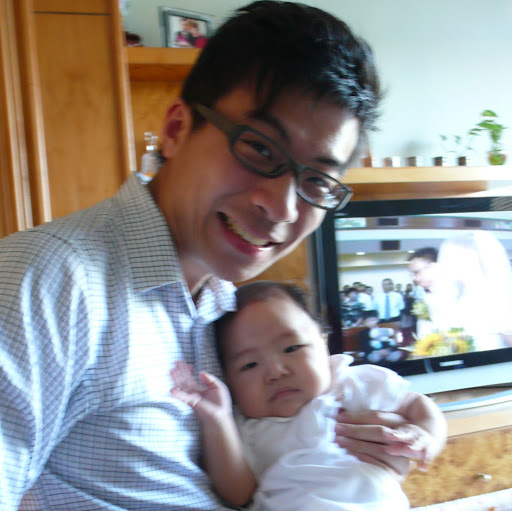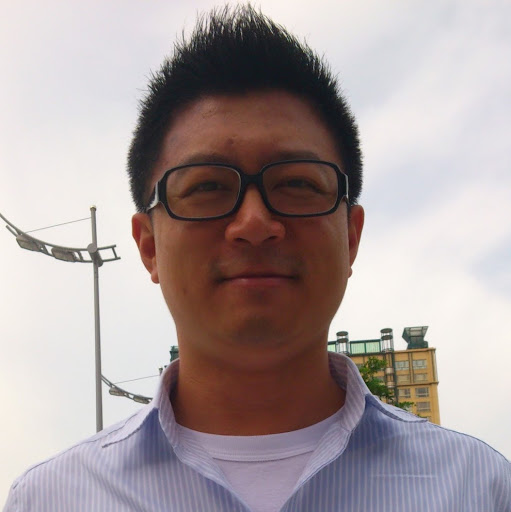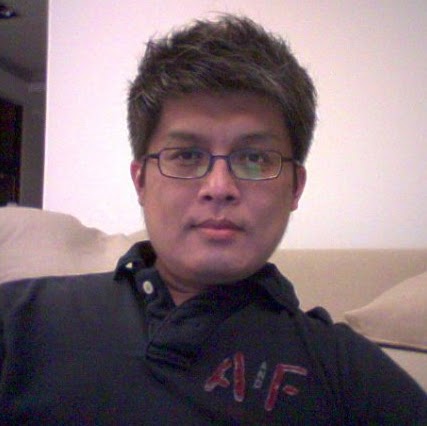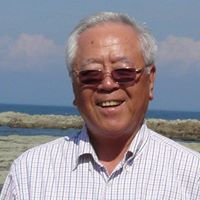Charles Kang Cheng
age ~89
from Cupertino, CA
- Also known as:
-
- Charles K Cheng
- Charles Te Cheng
- Charles Joyce Cheng
- Charles C Cheng
- Phone and address:
-
18817 Tuggle Ave, Cupertino, CA 95014
(408)2523653
Charles Cheng Phones & Addresses
- 18817 Tuggle Ave, Cupertino, CA 95014 • (408)2523653
- 10392 Scenic Blvd, Cupertino, CA 95014 • (408)2551290
- Newark, CA
- 609 Giraudo Dr, San Jose, CA 95111
- Mountain View, CA
- Santa Clara, CA
- San Diego, CA
- Alameda, CA
Name / Title
Company / Classification
Phones & Addresses
Owner
Charles Cheng CPA
Accounting/Auditing/Bookkeeping Tax Return Preparation Services · Accountant
Accounting/Auditing/Bookkeeping Tax Return Preparation Services · Accountant
520 S El Camino Real, San Mateo, CA 94402
(650)6968288, (650)6968289
(650)6968288, (650)6968289
President
LOKAGO GROUP, INC
Nonclassifiable Establishments
Nonclassifiable Establishments
1435 Koll Cir SUITE 108, San Jose, CA 95112
532 E Weddell Dr, Sunnyvale, CA 94089
558 Flagg Ave, San Jose, CA 95128
532 E Weddell Dr, Sunnyvale, CA 94089
558 Flagg Ave, San Jose, CA 95128
President
Hetman Enterprises
Electronic Computer Manufacturing
Electronic Computer Manufacturing
780 Montague Expy STE 202, San Jose, CA 95131
(408)8949474
(408)8949474
INNOVATIVE BUSINESS SOLUTIONS, LLC
President
Hiq Systems
Semiconductors · Ret Computers/Software Mfg Electronic Computers · Electronic Computer Manufacturing
Semiconductors · Ret Computers/Software Mfg Electronic Computers · Electronic Computer Manufacturing
780 Montague Expy #202, San Jose, CA 95131
781 Montague Expy, San Jose, CA 95131
781 Montague Expy, San Jose, CA 95131
President
EOL RESEARCH TECHNOLOGY, INC
10392 Scenic Cir, Cupertino, CA 95014
Us Patents
-
High Numerical Aperture Optical Focusing Device Having A Conical Incident Facet And A Parabolic Reflector For Use In Data Storage Systems
view source -
US Patent:6377535, Apr 23, 2002
-
Filed:Oct 26, 1998
-
Appl. No.:09/179279
-
Inventors:Hong Chen - San Jose CA
Chuan He - Fremont CA
Carl J. Carlson - Pleasanton CA
Charles C. Cheng - Cupertino CA
Yugang Wang - Milpitas CA -
Assignee:Read-Rite Corporation - Fremont CA
-
International Classification:G11B 7135
-
US Classification:36911209, 369 13, 369 4423, 36911225, 36911228, 3691121
-
Abstract:An optical focusing device for focusing an incident optical beam onto a focal plane, as a focal spot. The optical focusing device includes an incident central refractive facet upon which an optical beam impinges, and a high-index glass body through which the incident optical beam passes toward a bottom reflective surface. The bottom reflective surface reflects the optical beam through the body, toward a peripheral reflector. The peripheral reflector focuses the optical beam toward a focal plane on which the focal spot is formed. The focal plane is defined within a pedestal that forms part of the optical focusing device, and that extends from the bottom reflective surface. The central facet is conically shaped for refracting the incident optical beam away from the pedestal, onto the bottom reflective surface. The peripheral reflector surrounds the central facet and can have various appropriate shapes, such as an aspherical shape or a tilted parabolic shape, which compensates for the conical factor and aberrations introduced by the central facet. The top surface includes the central facet and the peripheral facet, and can be made substantially flat using diffractive optical elements or Fresnel optics.
-
Method And Apparatus For Caching Protocol Processing Data
view source -
US Patent:7237031, Jun 26, 2007
-
Filed:Mar 7, 2002
-
Appl. No.:10/093308
-
Inventors:Charles T. Cheng - Milpitas CA, US
-
Assignee:SUN Microsystems, Inc. - Santa Clara CA
-
International Classification:G06F 15/16
-
US Classification:709230, 709236
-
Abstract:A method and apparatus are provided for caching data for protocol processing. A protocol processing cache stores data needed for the generation of new headers, from both receive and transmit flows. Some data may be stored in the cache only after being processed (e. g. , updated, calculated) by a protocol processor. Other data may bypass the protocol processor and be stored in the cache without being handled by the protocol processor. An entry in the cache includes data needed for header generation, a tag identifying an index into a control block memory of the TCP connection to which the data corresponds. An entry may also include one or more control indicators to indicate whether a transmit flow has been acknowledged, whether a receive flow has been observed, and whether the transmit flow has been updated with control data from the receive flow. The apparatus is protocol processor independent.
-
Method And Apparatus For Avoiding Collisions During Packet Enqueue And Dequeue
view source -
US Patent:7404058, Jul 22, 2008
-
Filed:May 31, 2003
-
Appl. No.:10/448960
-
Inventors:John M. Lo - Fremont CA, US
Charles T. Cheng - San Jose CA, US -
Assignee:Sun Microsystems, Inc. - Santa Clara CA
-
International Classification:G06F 12/00
G06F 5/10
G06F 5/16
H04L 12/56 -
US Classification:711168, 711101, 711110, 711149, 711150, 710 39, 710 52, 710 54, 370229, 370412
-
Abstract:A method and apparatus for enqueuing and dequeuing packets to and from a shared packet memory, while avoiding collisions. An enqueue process or state machine enqueues packets for a communication connection (e. g. , channel, queue pair, flow). A dequeue process or state machine operating in parallel dequeues packets and forwards them (e. g. , to an InfiniBand node). Packets are stored in the shared packet memory, and status/control information is stored in a control memory that is updated for each packet enqueue and packet dequeue. Prior to updating the packet and/or control memory, each process interfaces with the other to determine if the other process is active and/or to identify the other process' current communication connection. If the enqueue process detects a collision, it pauses (e. g. , for a predetermined number of clock cycles).
-
Data Corruption Avoidance In Dram Chip Sparing
view source -
US Patent:7676729, Mar 9, 2010
-
Filed:Aug 23, 2006
-
Appl. No.:11/508758
-
Inventors:Charles Cheng - San Jose CA, US
Robert E. Cypher - Saratoga CA, US
Michael W. Parkin - Palo Alto CA, US -
Assignee:Sun Microsystems, Inc. - Santa Clara CA
-
International Classification:G11C 29/00
-
US Classification:714767
-
Abstract:A memory controller, system, and methods are disclosed. The system comprises a memory controller interconnected to a plurality of memory chips. Each memory chip stores data at a plurality of locations. The memory controller performs a sparing transaction comprising reading data from a given location of one or more of the memory chips including a first memory chip, writing the data to a given location of one or more of the memory chips including a second memory chip, wherein during writing, data from the first memory chip is written to the second memory chip, and allowing additional memory transactions directed to the memory chips between the start of reading and the end of writing unless the additional memory transaction is targeted to the given location. In a further embodiment, the sparing transaction comprises correcting errors in the data before writing the data.
-
Adjustable Pet Raincoat
view source -
US Patent:20100206247, Aug 19, 2010
-
Filed:Jun 24, 2009
-
Appl. No.:12/490999
-
Inventors:Charles T. Cheng - San Jose CA, US
Lawrence Cheng - San Jose CA, US -
International Classification:A01K 13/00
-
US Classification:119850
-
Abstract:An adjustable pet raincoat and a method of using the raincoat are disclosed. An adjustable pet raincoat comprises one or more foldable torso covers and an inflatable head cover. Each torso cover has one or more sections and can be fully extended or folded. A torso cover can also be attached to another torso cover to form a bigger one to fit the size of a pet. Torso straps and a chest strap are attached to torso covers and used to anchor the pet raincoat on a pet. In a further embodiment, sections of a torso cover are connected to their neighboring sections only at their middle part of divided lines to allow flexible use of each section.
-
High Numerical Aperture Optical Focusing Device For Use In Data Storage Systems
view source -
US Patent:62297821, May 8, 2001
-
Filed:Oct 26, 1998
-
Appl. No.:9/179278
-
Inventors:Yugang Wang - Milpitas CA
Chuan He - Fremont CA
Hong Chen - San Jose CA
Joseph J. Miceli - Saratoga CA
Charles C. Cheng - Cupertino CA
Ross W. Stovall - Fremont CA -
Assignee:Read-Rite Corporation - Fremont CA
-
International Classification:G11B 700
-
US Classification:36911208
-
Abstract:An optical focusing device for focusing an incident optical beam onto a focal plane, as a focal spot. The optical focusing device includes an incident central refractive facet upon which an optical beam impinges, and a high-index glass body through which the incident optical beam passes toward a bottom reflective surface. The bottom reflective surface reflects the optical beam through the body, toward a peripheral reflector. The peripheral reflector focuses the optical beam toward a focal plane on which the focal spot is formed. The focal plane is defined within a pedestal that forms part of the optical focusing device, and that extends from the bottom reflective surface. The central facet is conically shaped for refracting the incident optical beam away from the pedestal, onto the bottom reflective surface. The peripheral reflector surrounds the central facet and can have various appropriate shapes, such as an aspherical shape or a tilted parabolic shape, which compensates for the conical factor and aberrations introduced by the central facet. The top surface includes the central facet and the peripheral facet, and can be made substantially flat using diffractive optical elements or Fresnel optics.
-
High Na Solid Catadioptric Focusing Device Having A Flat Kinoform Phase Profile
view source -
US Patent:62121537, Apr 3, 2001
-
Filed:Jan 21, 1999
-
Appl. No.:9/235129
-
Inventors:Hong Chen - San Jose CA
Chuan He - Fremont CA
Ross W. Stovall - Fremont CA
Charles C. Cheng - Cupertino CA -
Assignee:Read-Rite Corporation - Fremont CA
-
International Classification:G11B 700
-
US Classification:36911212
-
Abstract:A magneto-optical head using a catadioptric focusing device comprised of an incident surface, a bottom reflective surface, a pedestal, and a body. The incident surface is generally flat and is comprised of a central diffractive, optically transmissive facet and a peripheral facet comprised of a kinoform phase profile. In a data writing or reading mode, an incident optical beam, such as a laser beam impinges upon the central facet, and is diffracted thereby. The incident laser beam can be collimated, convergent or divergent. The laser beam passes through the transparent body, and impinges upon the bottom reflective surface. The laser beam is then reflected by the bottom reflective surface, through the body, unto the kinoform phase profile. The laser beam is reflected and refracted by the peripheral kinoform phase profile as a focused beam, through the body, and is focused as a focal point. The focal point is preferably located at, or in close proximity to a pedestal edge, along a central axis, in very close proximity to the disk.
-
Near Field Magneto-Optical Head Made Using Wafer Processing Techniques
view source -
US Patent:61307793, Oct 10, 2000
-
Filed:Jul 6, 1998
-
Appl. No.:9/111098
-
Inventors:Carl J. Carlson - Pleasanton CA
Joseph Miceli - Saratoga CA
Hong Chen - Cupertino CA
Chuan He - Fremont CA
Charles C-K Cheng - Cupertino CA
Ross W Stovall - Fremont CA -
Assignee:Read-Rite Corporation - Fremont CA
-
International Classification:G02B 518
G11B 527
G11B 700 -
US Classification:359566
-
Abstract:The method of making and self-aligning a magneto-optical head at a wafer level is as follows: A flat optical substrate is molded or heat pressed in batches as a wafer level to form the desired lens shapes. Coil cavities or depressions are simultaneously formed with the lens to accommodate the coil assembly. Conductive plugs are formed in proximity to the cutting lines, for wire bonding attachment to the coil. The plugs are filled with a conductive material such as copper. The plugs do not extend through the entire depth of the optical wafer, thus further facilitating the mass production of the integrated heads. The slider body wafer is formed from silicon or other appropriate material. The slider body wafer and the lens/coil wafer are bonded. Coils and pedestals are formed on the lens / coil plate using thin-film processing techniques.
Medicine Doctors

Charles C. Cheng
view sourceSpecialties:
General Surgery, Surgical Oncology
Work:
Theda Care PhysiciansFox Valley Surgical Associates
1818 N Meade St STE 240, Appleton, WI 54911
(920)7318131 (phone), (920)7336668 (fax)
1818 N Meade St STE 240, Appleton, WI 54911
(920)7318131 (phone), (920)7336668 (fax)
Education:
Medical School
University of Southern California Keck School of Medicine
Graduated: 1994
University of Southern California Keck School of Medicine
Graduated: 1994
Procedures:
Appendectomy
Breast Biopsy
Breast Reduction
Colonoscopy
Endoscopic Retrograde Cholangiopancreatography (ERCP)
Gallbladder Removal
Hemorrhoid Procedures
Hernia Repair
Laparoscopic Appendectomy
Laparoscopic Gallbladder Removal
Mastectomy
Oophorectomy
Pilonidal Cyst Excision
Proctosigmoidoscopy
Sigmoidoscopy
Skin Tags Removal
Small Bowel Resection
Spleen Surgey
Thoracoscopy
Thyroid Gland Removal
Tracheostomy
Upper Gastrointestinal Endoscopy
Breast Biopsy
Breast Reduction
Colonoscopy
Endoscopic Retrograde Cholangiopancreatography (ERCP)
Gallbladder Removal
Hemorrhoid Procedures
Hernia Repair
Laparoscopic Appendectomy
Laparoscopic Gallbladder Removal
Mastectomy
Oophorectomy
Pilonidal Cyst Excision
Proctosigmoidoscopy
Sigmoidoscopy
Skin Tags Removal
Small Bowel Resection
Spleen Surgey
Thoracoscopy
Thyroid Gland Removal
Tracheostomy
Upper Gastrointestinal Endoscopy
Conditions:
Abdominal Hernia
Anal Fissure
Anal or Rectal Abscess
Appendicitis
Benign Neoplasm of Breast
Anal Fissure
Anal or Rectal Abscess
Appendicitis
Benign Neoplasm of Breast
Languages:
English
Description:
Dr. Cheng graduated from the University of Southern California Keck School of Medicine in 1994. He works in Appleton, WI and specializes in General Surgery and Surgical Oncology. Dr. Cheng is affiliated with Saint Elizabeth Hospital, Thedacare Medical Center - New London and Thedacare Regional Medical Center Appleton.

Charles L. Cheng
view sourceSpecialties:
Emergency Medicine
Work:
Valley Emergency PhysiciansValley Medical Group Center
1025 S Anaheim Blvd, Anaheim, CA 92805
(714)5632808 (phone), (714)6874906 (fax)
1025 S Anaheim Blvd, Anaheim, CA 92805
(714)5632808 (phone), (714)6874906 (fax)
Education:
Medical School
Virginia Commonwealth University SOM
Graduated: 1985
Virginia Commonwealth University SOM
Graduated: 1985
Languages:
English
Description:
Dr. Cheng graduated from the Virginia Commonwealth University SOM in 1985. He works in Anaheim, CA and specializes in Emergency Medicine. Dr. Cheng is affiliated with Anaheim Global Medical Center and Orange County Global Medical Center.
Resumes

Charles Cheng
view sourcePosition:
Sr. Director of Product Marketing at Trend Micro
Location:
San Francisco Bay Area
Industry:
Computer Software
Work:
Trend Micro since Jul 2008
Sr. Director of Product Marketing
Sr. Director of Product Marketing
Education:
Hanover Park Regional High School 1987 - 1991
Massachusetts Institute of Technology
Massachusetts Institute of Technology

Electrical/Electronic Manufacturing Professional
view sourceLocation:
San Francisco Bay Area
Industry:
Electrical/Electronic Manufacturing

Patent Agent At Oracle
view sourcePosition:
Patent Agent at Oracle Corporation
Location:
San Francisco Bay Area
Industry:
Computer Hardware
Work:
Oracle Corporation since Feb 2010
Patent Agent
Sun Microsystems, Inc. 2006 - Feb 2010
Patent Agent
Sun Microsystems 1999 - 2006
Staff Engineer
Divio Inc. (now ESS Technology) 1997 - 1999
ASIC Design Manager
Sun Microsystems 1996 - 1997
Member of Technical Staff
Patent Agent
Sun Microsystems, Inc. 2006 - Feb 2010
Patent Agent
Sun Microsystems 1999 - 2006
Staff Engineer
Divio Inc. (now ESS Technology) 1997 - 1999
ASIC Design Manager
Sun Microsystems 1996 - 1997
Member of Technical Staff
Education:
University of Southern California 1991
M.S., Electrical Engineering
M.S., Electrical Engineering
Honor & Awards:
First place of Toastmasters international speech contest at Area contest and finalist at Divisional contest in California, 1999.
Inventor of 3 U.S. patents and author of a technical publication.

Charles Cheng
view sourceLocation:
United States

Economics Student At Msu
view sourceLocation:
East Lansing, Michigan
Industry:
Financial Services
Education:
Michigan State University 2010 - 2014
International Academy 2009 - 2010
International Baccalaureate Diploma Program Shanghai American School Puxi Campus 2006 - 2010
International Baccalaureate Diploma Program
International Academy 2009 - 2010
International Baccalaureate Diploma Program Shanghai American School Puxi Campus 2006 - 2010
International Baccalaureate Diploma Program
Skills:
PowerPoint
Interests:
Experiencing life, sports, watching movies, reading, music concerts, live shows, supporting environmental issues, technology
Isbn (Books And Publications)

Altering Collective Bargaining: Citizen Participation in Educational Decision Making
view sourceAuthor
Charles W. Cheng
ISBN #
0275563006

Flickr
Myspace
Googleplus

Charles Cheng
Work:
Sinosocial.com - Technican (2007-2011)
Education:
Baruch College (CUNY) - Finance and Investment

Charles Cheng
Education:
The University of Hong Kong - Civil Engineering (Law), SKH Tang Shiu Kin Secondary School
Tagline:
For you, a thousand times over

Charles Cheng

Charles Cheng

Charles Cheng

Charles Cheng
Bragging Rights:
LOVES Star wars

Charles Cheng

Charles Cheng
News

Alpharetta, Milton Students Named National Merit Semifinalists
view source- Northview High School: Ruth Austin, Pragya Banerjee, Ashna Bhardwaj, Charles Cheng, Jasmin Gao, Felicia Guo, Amy L. Jiang, Minji Kim, Judy Li, Michelle Liu, Calista Mei, Prahathishree Mohanavelu, Evan Moy, Thomas Moy, Soumil Nariani, Sally L. Pan, Keshav S. Pandiri, Sidharth S. Potdar, Nithin Raghav
- Date: Sep 15, 2016
- Category: U.S.
- Source: Google
Youtube

Charles Cheng
view source
Charles Cheng
view source
Charles Cheng
view source
Charles Cheng
view source
Charles Cheng
view source
Charles Cheng
view source
Charles Cheng Zai Chern
view source
Charles Cheng
view sourceClassmates

Charles Cheng
view sourceSchools:
Farrington High School Honolulu HI 1988-1992

Charles Cheng, Cheney Hig...
view source
Pleasant Peckham Elementa...
view sourceGraduates:
Charles Cheng (1974-1978),
Anne Bowkett (1967-1970),
Andy Munro (1971-1972),
Hanan Duchon (1993-1997),
Jay Brass (1970-1976),
David Levine (1969-1976)
Anne Bowkett (1967-1970),
Andy Munro (1971-1972),
Hanan Duchon (1993-1997),
Jay Brass (1970-1976),
David Levine (1969-1976)

Fisherville Junior High S...
view sourceGraduates:
Chris Carbis (1972-1976),
Charles Cheng (1979-1981),
Della Foster (1973-1977),
Joseph Eastwood (1978-1982),
Ann Reid (1969-1973)
Charles Cheng (1979-1981),
Della Foster (1973-1977),
Joseph Eastwood (1978-1982),
Ann Reid (1969-1973)

University of Toronto - M...
view sourceGraduates:
Charles Cheng (1986-1990),
Jeff Machat (1982-1986),
Murray Stasick (1942-1949),
Jane Gilbert (1984-1989),
Jeffrey Davidson (1976-1977)
Jeff Machat (1982-1986),
Murray Stasick (1942-1949),
Jane Gilbert (1984-1989),
Jeffrey Davidson (1976-1977)

Newtonbrook High School, ...
view sourceGraduates:
Kerri Tadier (1982-1986),
Charles Cheng (1982-1984),
Angelica Venzel (2000-2004),
Danny Sgro (1982-1986)
Charles Cheng (1982-1984),
Angelica Venzel (2000-2004),
Danny Sgro (1982-1986)

St. Thomas Aquinas School...
view sourceGraduates:
Charlie Cheng (1984-1985),
Loretta Nunziato (1954-1957),
Francis De Marco (1962-1971),
Dolores Oristaglio (1932-1940),
Frank Monzo (1954-1955)
Loretta Nunziato (1954-1957),
Francis De Marco (1962-1971),
Dolores Oristaglio (1932-1940),
Frank Monzo (1954-1955)
Get Report for Charles Kang Cheng from Cupertino, CA, age ~89














